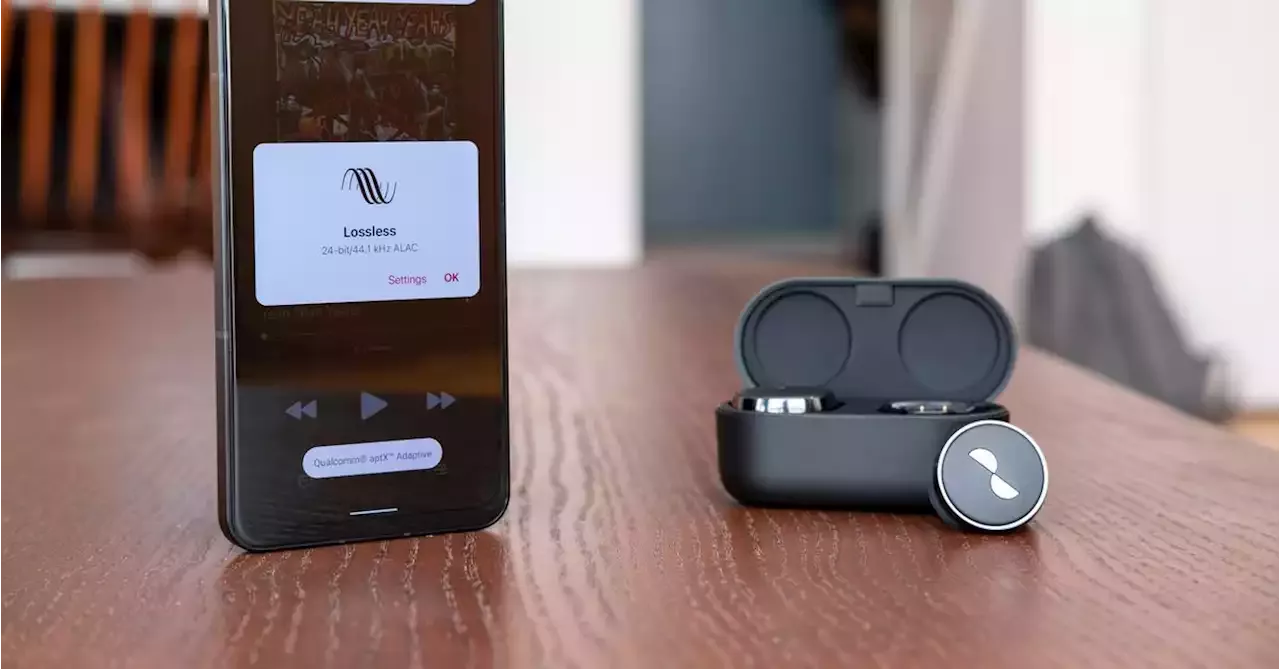Hands-on with AptX Lossless, CD-quality music is still the benchmark for decent audio; it’s not quite hi-res, but it’s noticeably better than the lossy, compressed music found on Spotify and your old MP3 library. But actually listening to uncompressed CD-quality music on a phone can still be tricky if convenience is also important. The source material needs to be high enough quality in the first place, and once it reaches your phone you need a way to get it to your headphones without that extra audio quality being compressed away. Easy enough in an era of wired headphones, but a little more difficult with wireless earbuds.

Qualcomm’s new AptX Lossless standard is supposed to finally close the gap between the fidelity of CD-quality audio and the imperfect compression of Bluetooth. Accessing it is still harder than it should be, but after having spent an afternoon comparing it against its predecessor, the difference in quality is very much there.
It’s taken a bit of time for hardware to emerge that actually supports the new standard since it was first announced over a year ago. In June, audio company Nura announced the first pair of earbuds with support for AptX Lossless, but only a handful of smartphones on the market are actually compatible with the new codec. That’s finally starting to change, though, with phones such as the Asus Zenfone 9 shipping with built-in support AptX Lossless. Nura provided me with a sample of the phone to be able to properly put its new earbuds through their paces.
The NuraTrue Pro themselves are a fairly typical looking set of true wireless earbuds. They offer 8 hours of charge from the earbuds themselves, an extra 24 hours from the case, and come with four microphones on each earbud to handle calls and noise-canceling. These microphones are also responsible for Nura’s trademark personalized sound technology, which it claims measures your ears to optimize audio for them. Nura is currently funding the earbuds through a Kickstarter campaign Samsung patents, which says that the earbuds are expected to launch in the fourth quarter of this year.
So what’s AptX Lossless?
Critically, Nura’s wireless buds support Qualcomm’s AptX Lossless standard. The chip manufacturer says the new Bluetooth technology is able to transmit CD-quality audio (16-bit / 44.1kHz), without any loss of detail (hence “Lossless”). That’s in contrast to its previous highest-resolution codec, AptX HD, which is still heavily compressed despite claims of it transmitting audio that sounds on a par with 24-bit / 48kHz or even 24-bit / 96kHz.
Despite its lossless branding, AptX Lossless isn’t entirely compression-free. There’s still some compression at work here to bring 1.4Mbps CD-quality audio down to the 1Mbps bit-rate that AptX Lossless is capable of transmitting. But the difference here is that the compression being used shouldn’t result in any loss of data, and is “bit-for-bit” exact. “After it’s uncompressed it’s exactly the same as the original,” Nura CEO Luke Campbell says, “Think of a ZIP file. It gets smaller, but it’s exactly what it was when it comes out.”
The testing methodology
For my tests I made use of Apple Music’s Lossless audio streaming. I verified that I had all audio quality settings set to their highest available option, and checked the specific audio resolutions listed for each track. In some cases these tracks were actually higher-resolution than the CD-quality audio that AptX Lossless is capable of transmitting, but that shouldn’t matter for the purposes of my comparative test.
In theory the test should be relatively simple, but Qualcomm’s software doesn’t make it particularly easy to see when you’re streaming via AptX Lossless. The new codec is technically an extension of AptX Adaptive, the company’s preexisting codec that dynamically scales your audio’s bitrate depending on your environment. So when I connected the NuraTrue Pro earbuds to the Asus Zenfone 9, a Qualcomm tooltip popped up to note that I was connected via “Snapdragon Sound” and “AptX Adaptive” without specifically mentioning lossless. But between Nura’s confirmation, me listening in an uncrowded location, and Qualcomm’s AptX site specifically mentioning that the device supports AptX Lossless, I’m confident that I’m hearing lossless audio.
Neither Qualcomm’s software nor Android give you an easy way to toggle between different versions of AptX to do an AB test. Instead, on Campbell’s suggestion, I took advantage of the NuraTrue Pro’s multipoint connectivity to directly compare listening via an AptX Lossless-compatible handset (the Asus Zenfone 9) with a regular AptX HD-compatible phone (the Honor 70). With this setup, I could have Apple Music streaming losslessly to both phones, and then have the NuraTrue Pro connected to each one in turn to see what, if any, difference in audio quality I could discern.




















Leave a Reply